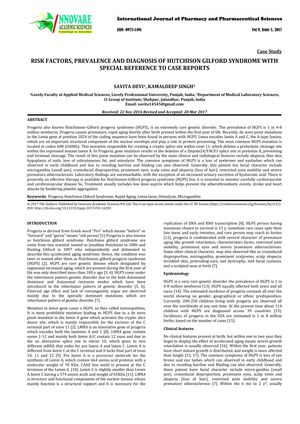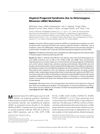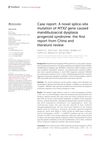Risk Factors, Prevalence, and Diagnosis of Hutchinson-Gilford Syndrome with Special Reference to Case Reports

TLDR Hutchinson-Gilford Progeria Syndrome is a rare genetic disorder caused by a specific gene mutation, characterized by aging symptoms and managed by monitoring heart health and using low-dose aspirin.
The 2017 document details Hutchinson-Gilford Progeria Syndrome (HGPS), a rare genetic condition with a prevalence of 1 in 4-8 million newborns, caused by a mutation in the LMNA gene. This mutation leads to abnormal lamin A protein production, affecting the nuclear envelope's structural integrity and resulting in symptoms like alopecia, thin skin, and osteolysis. Laboratory findings are generally normal except for increased urinary hyaluronic acid. The document includes case reports, such as a 14-year-old girl with typical HGPS features and a 5-year-old girl with HGPS and hearing loss. No effective therapy exists, but low-dose aspirin is used to manage cardiovascular risks. Monitoring for cardiovascular complications is crucial in HGPS management.

